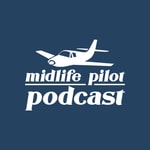Behind the Wings – Details, episodes & analysis
Podcast details
Technical and general information from the podcast's RSS feed.

Behind the Wings
Wings Over the Rockies Air & Space Museum™
Frequency: 1 episode/17d. Total Eps: 70

Recent rankings
Latest chart positions across Apple Podcasts and Spotify rankings.
Apple Podcasts
🇨🇦 Canada - aviation
29/07/2025#78🇬🇧 Great Britain - aviation
29/07/2025#25🇩🇪 Germany - aviation
29/07/2025#58🇺🇸 USA - aviation
29/07/2025#30🇫🇷 France - aviation
29/07/2025#83🇨🇦 Canada - aviation
28/07/2025#69🇬🇧 Great Britain - aviation
28/07/2025#19🇩🇪 Germany - aviation
28/07/2025#42🇺🇸 USA - aviation
28/07/2025#26🇫🇷 France - aviation
28/07/2025#81
Spotify
No recent rankings available
Shared links between episodes and podcasts
Links found in episode descriptions and other podcasts that share them.
See all- https://www.jwst.nasa.gov/
68 shares
- https://www.eaa.org/airventure
23 shares
RSS feed quality and score
Technical evaluation of the podcast's RSS feed quality and structure.
See allScore global : 79%
Publication history
Monthly episode publishing history over the past years.
Stunt Flying for Top Gun: Maverick - Episode 40
Season 4
lundi 24 juin 2024 • Duration 29:04
Former F-18 and Blue Angels pilot, Scott Kartvedt, takes us behind the scenes of flying in Top Gun: Maverick.
In this episode hear behind-the-scenes stories of how some of the most realistic flying scenes are made. Scott tells us about his time in the Navy, flying as a Blue Angel and on the Patriots Jet team, and "dogfighting" with a helicopter while filming. This one is going to be cool!
Episode 40 marks the end of Season 4 of the Behind the Wings Podcast. We'll be taking a short break and will be back later this year for Season 5.
Key Takeaways:
- Scott's love of aviation started when he saw Blue Angels flying over his family's campsite. The original Top Gun also fueled his ambition to join the Navy.
- Scott started school as an accountant but later followed his dream of becoming a fighter pilot.
- In the Navy, Scott flew the F-18 as a fighter pilot and for the Blue Angels.
- All flying scenes in Maverick were performed and filmed in real time.
- Scott and his wingman Randy Howell flew as stunt pilots in L-39 jets for the final scene in Maverick. They were later edited over to match the fighters in the movie.
- While filming, Scott would often fly straight at the helicopter and pull away at the last second.
- Scott leaves us with encouraging advice to ask the question. If you don't ask, the answer is always no.
Resources:
Flying the Space Shuttle - Episode 39
Season 4
lundi 10 juin 2024 • Duration 30:45
In 1996, astronaut Tom Henricks became the first Space Shuttle pilot/commander to log 1,000 hours in space.
Tom tells us about his time as an F-4 pilot and F-16 test pilot, astronaut training, flying four Space Shuttle missions including two as a commander, and the challenges of flying at Mach 25. This one is going to be cool!
Key Takeaways:
- Tom's love of aviation started when he bought an airplane ride near his family's farm.
- Tom graduated number one in his weapons and test pilot school.
- After applying four times, Tom was selected to be a NASA astronaut in 1985.
- Tom flew to space four times on missions STS-44, 55, 70, and 78. They ran experiments, deployed satellites, and did some early testing that later would help build the International Space Station.
- The Space Shuttle reenters the atmosphere at Mach 25, making it very complicated to land successfully. Tom landed the Shuttle on his last two missions.
- At the time, STS-78 was the longest space mission to date at 405 hours. Later that same year, STS-80 broke its record by 19 hours.
- Tom is excited about the future of Artemis and hopes someday he may even step on the Moon.
Resources:
Behind the Wings Season 4 Trailer
Season 4
lundi 12 février 2024 • Duration 02:08
The Behind the Wings Podcast is back this February with Season 4 and 10 new episodes! Hear from Ed Dwight Jr, the first Black astronaut candidate, world record holder Michael Combs, and dive into topics like The Mental Health Pilot Parodox and the history of The Women Airfare Service Pilots (WASP).
New episodes come out every other Monday, starting February 19th. Subscribe wherever you listen, because we've got a lot to explore!
You can find the Behind the Wings podcast wherever you listen. For past episodes and show notes visit: WingsMuseum.org/podcast.
America's Secret MiG-23s - Episode 30
Season 3
lundi 20 novembre 2023 • Duration 44:14
An American MiG-23 pilot reveals long-held secrets in this in-depth conversation about a declassified program, Constant Peg.
On today's show, we’ll meet John Mann who flew in the first-of-its-kind adversary training program, Constant Peg, and take a deep dive into some of the most popular questions we got from you, our listeners. Established in 1977, this top-secret program aimed to train American pilots against the very same MiGs they may one day see in combat. Mann was an instructor who flew the MiG-21 and 23, and co-host John Barry flew in the program as a trainee. This one is going to be cool!
If you missed Part One, check that out on Wings Over the Rockies YouTube channel: America's Secret MiG-23s | Behind the Wings - YouTube.
Episode 30 marks the end of Season 3 of the Behind the Wings Podcast. We'll be taking a short break and will be back in the new year for Season 4.
Key Takeaways:
- John Mann served 24 years in the US Air Force where he had the opportunity to fly many aircraft, including the F-4, F-15, MiG-21, and MiG-23.
- Mann first flew as a trainee at Constant Peg and later flew the MiGs as a trainer.
- The MiG-23 was a very fast, beefy airplane, but it didn't turn well.
- Pilots would attend to overcome "Buck Fever", learn how the MiGs flew, and practice dog fighting.
- The maintainers at Constant Peg were the backbone of the program, facing specific challenges sourcing parts, with no maintenance book, and often receiving aircraft that were in a compromised condition.
- John Mann's advice: There are lots of opportunities in aviation. Go pursue your dreams!
Resources:
- Red Eagles: America’s Secret MiGs by Steve Davies
- CONSTANT PEG: Secret MiGs in the Desert > National Museum of the United States Air Force™ > Display (af.mil)
- Red Eagle Brief
- Mikoyan-Gurevich MiG-23 MLD "Flogger" | Wings Over the Rockies Air & Space Museum (wingsmuseum.org)
- Dark Eagles: a history of top secret U.S. aircraft programs
- AF Declassifies Elite Aggressor Program (archive.org)
The World's First Astronomers - Episode 29
Season 3
lundi 6 novembre 2023 • Duration 32:05
This episode will dive into the history of some of the world’s first astronomers, exploring how their knowledge has been passed down for more than 60,000 years. We are going to the southern hemisphere to learn about Australia’s Indigenous astronomy and the impact it has on our world today.
Our guest today is Peter Swanton! Peter is a Gamilaraay man from Mackay, Queensland, an astrophysics graduate, and cultural astronomer. He is actively involved in Indigenous astronomy, outreach, and research, and has a passion for the challenging yet critical subject of dark sky preservation. Peter will highlight the scientific importance of Indigenous star knowledge and the challenges and opportunities in preserving that history.
Join us as we hear the stories of Australia’s Indigenous Peoples, why constellations and star clusters are so impactful, and how issues like light pollution threaten the very field of astronomy itself. There is a lot to learn in this episode!
Key Takeaways:
- The Indigenous Peoples of Australia didn’t have a written language, they were only able to pass along information via spoken word, song, dance, and stories. There are an estimated 273 different language groups across Australia.
- While not all stars can be viewed from both hemispheres, all the zodiac constellations are viewable from either. Although, they will be upside down depending on which hemisphere you are familiar with.
- The Emu in the Sky is a popular example of how astronomy was used practically by the Indigenous Peoples. Depending on what direction the Emu was facing, it helped give insight towards Emu life patterns.
- Creation stories are stories that are passed down that talk about the physical existence as well as store important information. A popular story about Australia’s constellation the Southern Cross tells the story of the first person to die on Earth.
- A songline is one of many paths across the land (or sometimes the sky). Embedded within traditional song cycles, dance rituals, stories, and artistic expressions, these pathways enable individuals to traverse vast distances while reciting the songs that describe landmarks, water sources, natural features, and sometimes stars and constellations. These routes serve as crucial connections between Native group ancestral lands, carrying intricate geographical, mythological, and cultural information giving directions on how to travel across Australia to visit other Indigenous groups.
- Light pollution is quickly starting to impact our dark skies. Due to light from cities and satellites, it is harder than ever before to see the stars and galaxies with the naked eye. Light pollution is not only affecting dark sky preservation, but is also adversely affecting our vision, bird migration patterns, and newborn sea turtles.
- Peter's message to younger generations is to pursue what makes you happy.
Resources:
Red Tails and Blue Skies: Tuskegee Today - Episode 28
Season 3
mardi 24 octobre 2023 • Duration 22:18
The Tuskegee Airmen were an experiment by the US Army Air Corps to determine whether Black pilots could handle military flying. It turns out they could! But the Tuskegee Airmen fought a second battle – one against racial discrimination.
With an impressive combat record and war accomplishments, the success of the Tuskegee Airmen helped influence then-President Harry Truman's decision to desegregate the armed forces in 1948.
Our Guests today are Bill Shepard and Col. James Harvey. Bill is the former Vice President of Education for the Commemorative Air Force (CAF), and former CAF Red Tail Squadron Leader. On today’s show, he explores with us the path that led him to proudly fly the P-51C Mustang for the CAF Red Tail Squadron. We will also hear from Col. James Harvey who was a Tuskegee Airman, and his personal journey as one of the first Black Aviators in the US military.
From Bill's journey with aviation to the history of the Tuskegee Airmen, there’s a lot to explore in this one!
Key Takeaways:
- Bill earned his US private pilot’s license at age 16 while still in high school
- The 6 Tuskegee principles are: Aim High, Believe in Yourself, Use Your Brain, Be Ready to Go, Never Quit and Expect to Win
- The Tuskegee Airmen helped influence President Harry Truman to sign Executive Order 9981 on July 26, 1948, mandating the desegregation of the U.S. military.
- Lt. Col. James H. Harvey III was a pilot with the 332nd Fighter Group, known as the Tuskegee Airmen. He later piloted on the team that won the military’s first ‘Top Gun’ contest in 1949.
- The Women Airforce Service Pilots (WASP) was a U.S. Army Air Forces program that tasked some 1,100 civilian women with noncombat military flight duties during World War II.
- Bill's advice: Dream big, work hard, and never give up!
Resources:
AI in Aviation - Episode 27
Season 3
lundi 9 octobre 2023 • Duration 31:44
This episode will dive into the cutting-edge realm of AI in aviation, with a particular focus on its military applications. From autonomous wingmen drones to predictive maintenance, we will explore the opportunities and risks of AI as it transforms the landscape of aerial warfare.
Our guest today is Col Tucker Hamilton, callsign “Cinco”. As the Chief of AI test and operations for the USAF, Col Hamilton is at the cutting edge of researching, testing, and implementing artificial intelligence in the realm of military aviation. Col. Hamilton began his career as an operational F-15C pilot, supporting Red Flag exercises, and real-world Operation Noble Eagle missions, at times escorting Air Force One and the U.S. President. He served as a Chief Instructor, Test Pilot, and has more than 2,000 flying hours in the F-35, F-15, F-18, F-16, A-10, and more than 20 additional aircraft. Is there anything he hasn’t done? We’re about to find out!
Join us as we unravel the intricate web of AI technologies shaping the future of aviation while gaining unique perspectives from a seasoned military leader at the forefront of this transformative field. There’s a lot to explore!
Key Takeaways:
- The Hollywood Bias makes AI seem scarier than it actually is. AI is just software and math that has to follow very narrow rules that humans establish. Its computer code trained with guardrails set in place by the programmers. AI cannot learn the way that we learn.
- Cinco is most excited about the future of humans and AI working together in all industries. For example, AI could aid radiologists in finding cancer, or assist pilots by managing more tedious tasks.
- With AI starting to become more widely available, the ethics surrounding it becomes a huge topic. As we move forward with this new technology, ethics will continue to be a part of the conversation.
- AI will likely never be fully autonomous because the programming would be biased. Since humans are inherently biased in one way or another, so would AI technology, meaning humans will always need to be present when AI is involved.
- The five parts of the DOD AI Ethics code are Being Responsible, Equitable, Traceable, Reliable, and Governable.
- DARPA ran a competition between AI-trained software and actual pilots. They went head to head in a simulator and the AI won by a landslide. This advancement is exciting because it means that we can create AI tutors to help train pilots at every level.
Resources:
Manufacturing the New Artemis Lunar Drill - Episode 26
Season 3
lundi 25 septembre 2023 • Duration 27:34
On today’s show we’re getting an inside look at the design, testing and manufacturing processes at Honeybee Robotics, as they build a key component for the Orion Spacecraft, and a new lunar drill.
Don your bunny suits, because we are excited to bring you inside a clean-room and experience first-hand how space hardware is made from prototype through manufacturing! Tune in to hear from Andrew Maurer and Isabel King of Honeybee, as we get a behind the scenes tour at their production facility in Longmont, CO. THIS is going to be cool!
We’ve explored the Artemis program on the show before, if you missed those episodes go back and give a listen to episode 10 to hear from an Orion spacecraft engineer, and episode 21 as we compare Apollo and Artemis with former NASA Astronaut Harrison Schmitt, and historian Dr. Teasel Harmony-Muir.
Key Takeaways:
- The Artemis Project aims to land near the southern pole of the Moon so that we can investigate and bring back samples of lunar ice. We can then test it and see how it got there and if it’s drinkable!
- Orion is the name of the spacecraft that will take astronauts to space, and Artemis is the name of the overall mission.
- Honeybee’s products are rigorously tested before being sent to NASA. Vibration, thermal, and human testing are just a few that help ensure safety and efficiency. They even have astronauts test and give their input!
- The lunar drill that Honeybee is creating will enable astronauts to drill about 3 meters into the Lunar Surface and collect several rock and ice samples.
Resources:
Hypersonic Flight & Heat Management - Episode 25
Season 3
lundi 11 septembre 2023 • Duration 31:59
This episode will dive into the world of hypersonic flight, and how new methods of heat management could help usher in a new era for high-speed flight. Join us as we look through the lens of a heat management company, Reaction Engines who is pushing the limits of technology in engines, to enable the next generation of hypersonic flight.
Hypersonic flight refers to speeds of more than five times the speed of sound, or Mach 5. Once you start talking about hypersonic speeds, there are lots of challenges that come into play from propulsion limitations to materials that can withstand high temperatures, economic feasibility, communications, physics, and more. Adam Dissel, President of Reaction Engines, helps us dive into many of these topics today, to get a better sense of the state of hypersonic flight, and where the cutting-edge of aerospace is headed.
Be sure to strap in, because there is a lot to learn in this high-speed episode!
Key Takeaways:
- Hypersonic flight refers to speeds of more than five times the speed of sound, or Mach 5, which is about 1 mile per second.
- With hypersonic flight there are lots of challenges from propulsion limitations to heat, economic feasibility, communications, physics, and more.
- The Silbervogel was the first hypersonic weapon, developed by German scientists in the 1930s. During the first manned orbital flight in April 1961, Russian Major Yuri Gagarin became the first human to reach hypersonic speeds. Also in 1961, Air Force Major Robert White reached speeds exceeding Mach 6 as he piloted the X-15 research aircraft.
- A scramjet is a variant of a ramjet airbreathing jet engine in which combustion takes place in supersonic airflow.
- Extracting and repurposing heat from jet engines could increase efficiency and speed.
- Microtubes with coolant inside help to maximize surface area and cooling capability.
- Reaction Engines test their cooling technology at Colorado Air and Space Port using the General Electric J-79 turbo jet engine.
- There are many potential spinoff applications for this cooling technology including in Formula 1 cars, and manufacturing.
Resources:
A Chief’s Take on Aviation in the Vietnam War - Episode 24
Season 3
lundi 28 août 2023 • Duration 23:54
Explore the pivotal role of aviation in the Vietnam War alongside former USAF Chief of Staff General Ron R. Fogleman (Ret).
Join us as we talk with Ron Fogleman, who takes us along his personal journey to becoming Chief of Staff and helps us uncover the strategic importance of aircraft during the Vietnam War. Ron has over 8,500 hours of flight time, including 315 combat missions where he logged 806 hours. During one of those missions, he was shot down while flying the F-100 Super Sabre and was rescued by clinging to the side of an AH-1 Cobra. Ron retired as Chief of Staff in 1997, after 34 years in the Air Force. He shares with us his pathway to becoming Chief of Staff, lessons he’s learned from the cockpit, and insight about aviation during the Vietnam War. THIS is going to be cool!
Key Takeaways:
- General Ron Fogleman served for 34 years before retirement, holding positions such as Fighter Pilot, Commander of the Air Mobility Command, Deputy Commander in Chief, Chief of Staff, and more.
- Ron graduated from the Air Force Academy in 1963, and later became the first graduate to advance to Air Force Chief of Staff.
- Ron flew the F-100 Super Sabre in Vietnam as a Misty Forward Air Controller (FAC). Forward Air Controllers during the war acted as close air support for troops on the ground, helping with aerial defense, rescues, patrols, and more.
- Vietnam was the first war where helicopters played a pivotal role. The AH-1 Cobra was invented during this time, and was one of the first gunships to be used in Vietnam. Other helicopters acted as troop transport, medical evacuation, and more.
- Ron was shot down while flying a mission in his F-100. He was rescued by an AH-1 Cobra by clinging to the side of the helicopter. At the time, the Cobra was prohibited from landing anywhere in enemy territory. Luckily, the pilots did not face any disciplinary action for their heroism.
- As Chief of Staff in 1995, Ron created the Air Force Core Values, “Integrity First, Service Before Self, and Excellence In All We Do.” These values are still in use today.
- From 1974-1975, Ron was stationed at Lowry Air Force base. The same hangar our museum uses today!
Resources:









